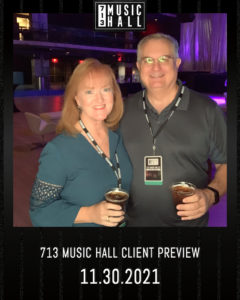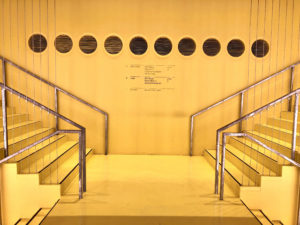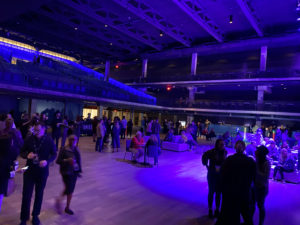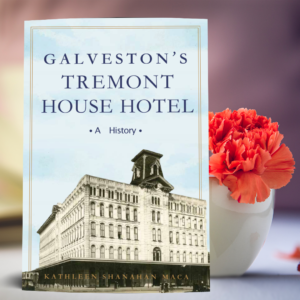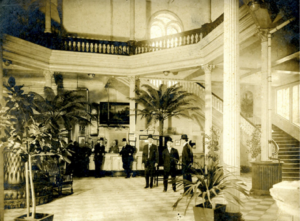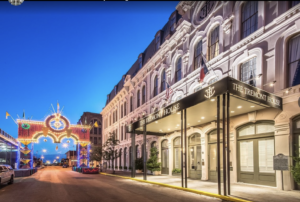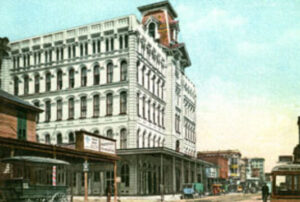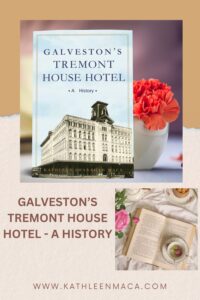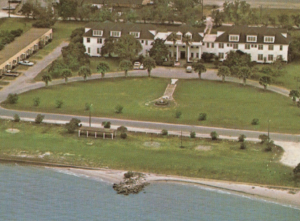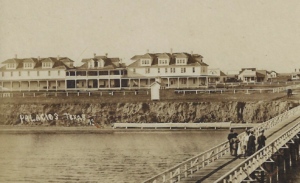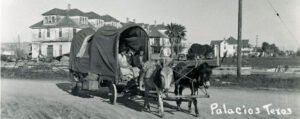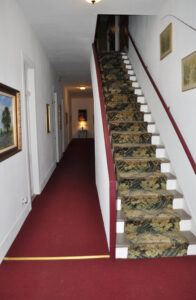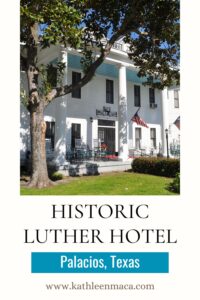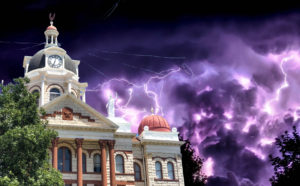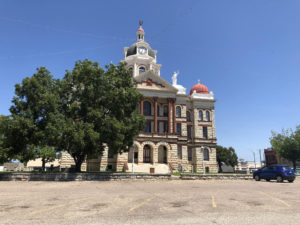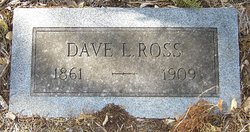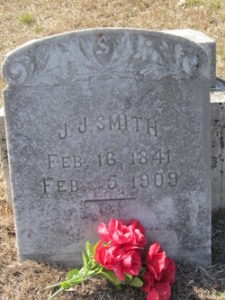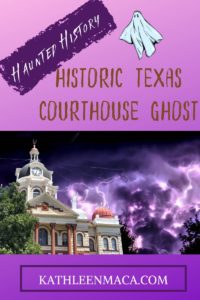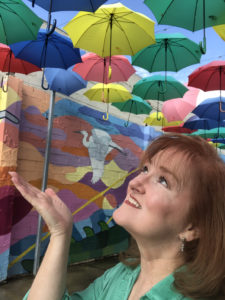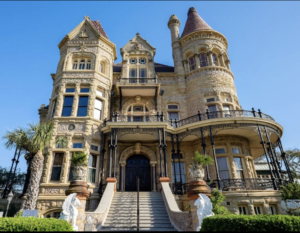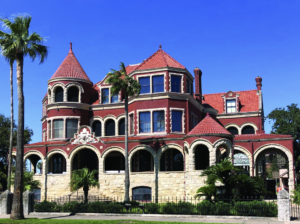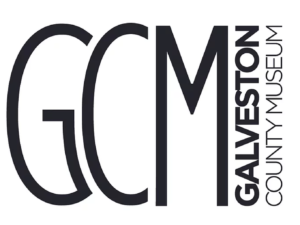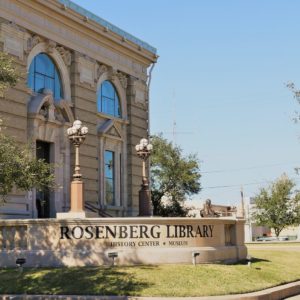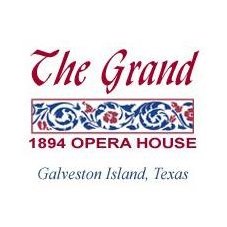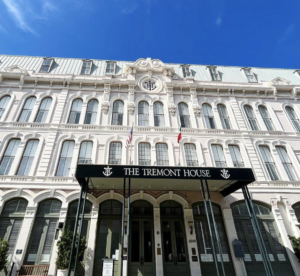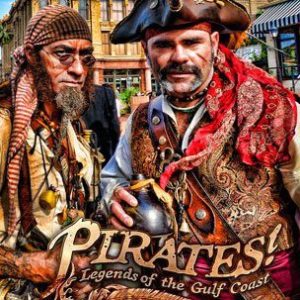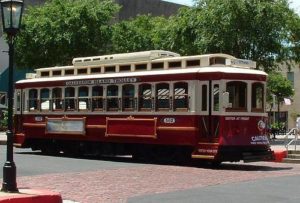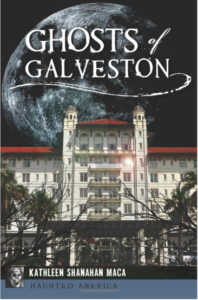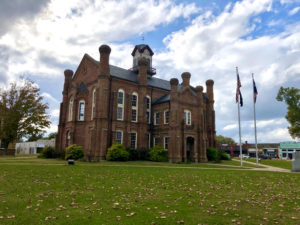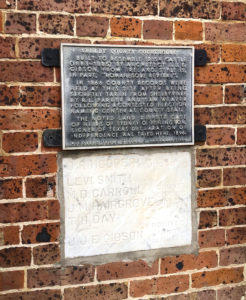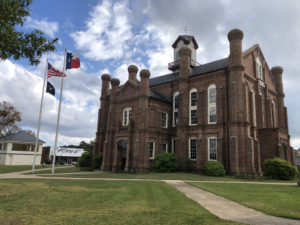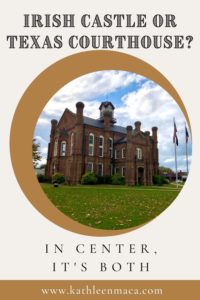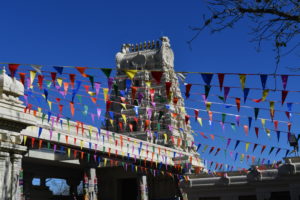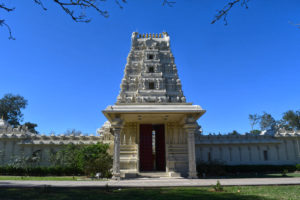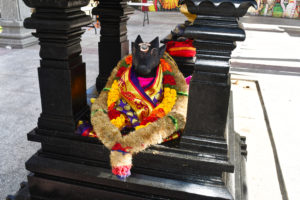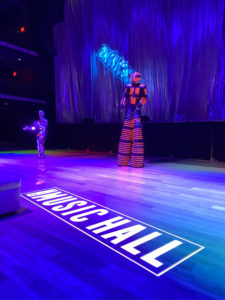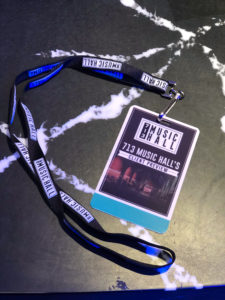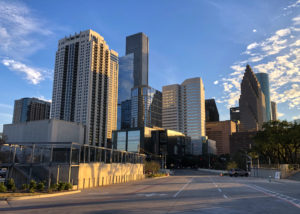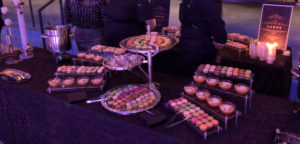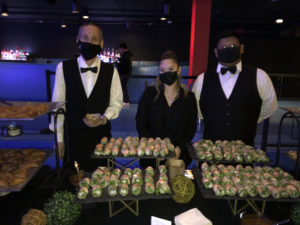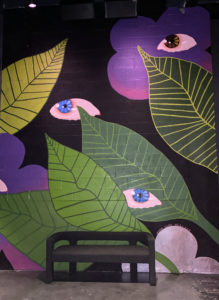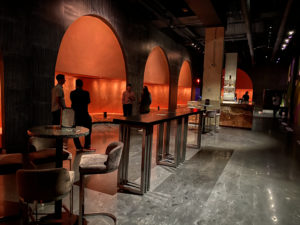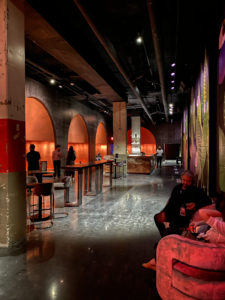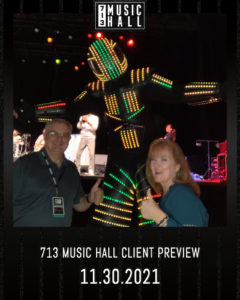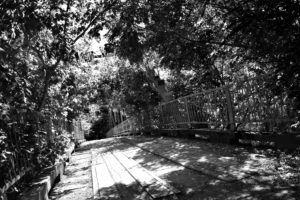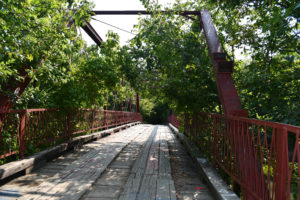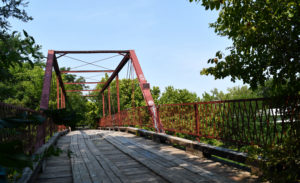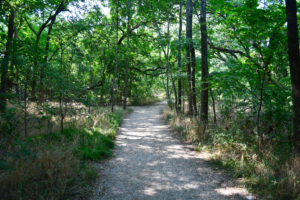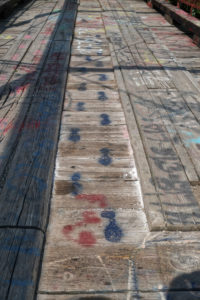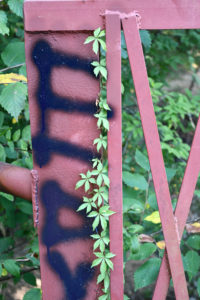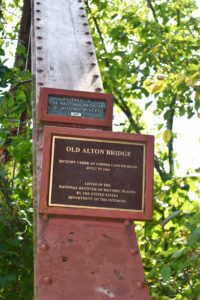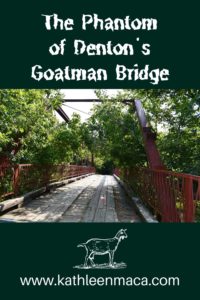Category: Architecture
Galveston’s Tremont House & the 1900 Storm
Coincidence? Perhaps.
 This morning my first thought was that I need to tackle the final draft of the chapter about the 1900 Storm for my upcoming book, History of Galveston’s Tremont House. And no, it actually didn’t occur to me until a couple of hours into work that today is the anniversary of that terrible hurricane.
This morning my first thought was that I need to tackle the final draft of the chapter about the 1900 Storm for my upcoming book, History of Galveston’s Tremont House. And no, it actually didn’t occur to me until a couple of hours into work that today is the anniversary of that terrible hurricane.
 About 1,000 people crowded into the Tremont to find shelter during the storm, and luckily all survived. Thousands of other people were not so lucky.
About 1,000 people crowded into the Tremont to find shelter during the storm, and luckily all survived. Thousands of other people were not so lucky.
The Thomas Edison film (isn’t it amazing that there is footage?!) entitled ‘Panoramic View of Tremont Hotel Galveston’ was taken in the aftermath, and shows the large structure still standing amid surrounding devastation. It’s the tall white building with narrow windows at the end of this clip. (Click below to view)
I’m looking forward to sharing this and other amazing tales in the History of Galveston’s Tremont House when the book releases in the first part of 2024.
Losing a Historical Treasure: Palacios’ Luther Hotel
 The phrase “seaside resort” brings to mind elegant escapes to the shore to listen to the waves break and take in the warmth of the sunshine. And people have been doing just that at The Luther Hotel in Palacios since it was bult in 1903.
The phrase “seaside resort” brings to mind elegant escapes to the shore to listen to the waves break and take in the warmth of the sunshine. And people have been doing just that at The Luther Hotel in Palacios since it was bult in 1903.
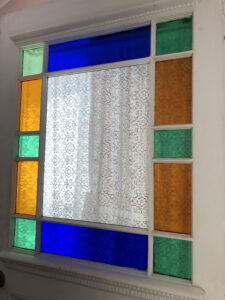 The Luther Hotel holds a unique place in Texas history as well as in the hearts of generations of visitors and their families whose generations have stayed there across 100 years. It’s one of the few surviving Gulf Coast hotels built to attract tourists in the early 20th century.
The Luther Hotel holds a unique place in Texas history as well as in the hearts of generations of visitors and their families whose generations have stayed there across 100 years. It’s one of the few surviving Gulf Coast hotels built to attract tourists in the early 20th century.
Small towns started popping up in Matagorda County along the railroad lines that arrived in the area in the earliest part of the 20th Century– Blessing (see my Blessing post here), Van Vleck, Midfield, Cortes, Buckeye, Markham, Big Hill, and of course Palacios.
Victoria architect Jules Leffland designed the hotel, which was constructed by contractor D. D. Rittenhouse. Longleaf yellow pine for the framing and cypress for the siding were brought from Louisiana via Southern Pacific Railroad for the project. The Rittenhouse family and construction crews lived in tents on the land while the hotel was being constructed.
When the building was finished, it was named the Bay View Hotel and though it only had sixteen rooms, it was advertised as having accomodations for 100 guests. What we now see as the center section of The Luther was the original Bay View.
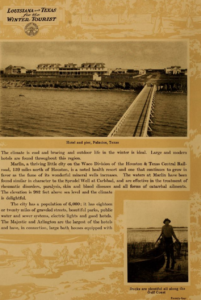
The number of visitors to Palacios grew exponentially in the next two years, enticed by “excursion rates” from the railroads and advertisements about the mild winters on the Texas coast. Yep, “Winter Texans” existed back then too.
In 1905, owners of the hotel decided to move it one half mile from its East Bay location to South Bay Boulevard to be closer to a new dance pavilion (also designed by Leffland) being built over the water. In order to do that, the original porches and chimney were removed and the structure was cut into three parts to be pulled by mule teams to its new location.
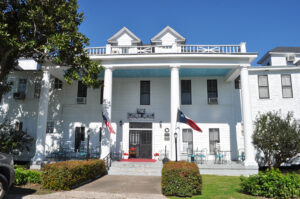 It was re-assembled and extended with east and west wings. That’s also when the 300-foot long porch, known as the “Longest Front Porch in Texas” were added.
It was re-assembled and extended with east and west wings. That’s also when the 300-foot long porch, known as the “Longest Front Porch in Texas” were added.
In addition, it acquired a dining room on the north side of the lobby, with a separate kitchen and a laundry building.
Such a grand place was worthy of a new name, and Hotel Palacios was chosen.
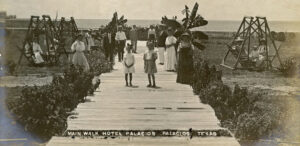 Thousands of visitors came to enjoy the surf bathing, warm weather, fishing, boating, lawn tennis and dancing on the pavilion. Meals in the dining room were served on Haviland china and silver, and a permanent orchestra provided music during lunch, dinner and for Sunday concerts.
Thousands of visitors came to enjoy the surf bathing, warm weather, fishing, boating, lawn tennis and dancing on the pavilion. Meals in the dining room were served on Haviland china and silver, and a permanent orchestra provided music during lunch, dinner and for Sunday concerts.
 A “Box Ball Alley” was built in 1913 that provided guests with alleys, pins and a ball to try their hand at a sport similar to bowling.
A “Box Ball Alley” was built in 1913 that provided guests with alleys, pins and a ball to try their hand at a sport similar to bowling.
Natural resources were used for the hotel, including water from an artesian well behind the structure piped into the building, and lighting was powered by gas generated on the land.
A string of owners and managers, some more conscious than other about upkeep of the property, maintained the hotel in the next few years though it remained a center of local social life.
 Charles and Elsie Luther purchased the run-down hotel in 1936 and undertook a massive renovation, which began with tearing down the old dining room and kitchen. The impressive porch was also removed, but its cypress lumber was saved and used as the foundation for an 11-room tourist court motel on the west side of the property.
Charles and Elsie Luther purchased the run-down hotel in 1936 and undertook a massive renovation, which began with tearing down the old dining room and kitchen. The impressive porch was also removed, but its cypress lumber was saved and used as the foundation for an 11-room tourist court motel on the west side of the property.
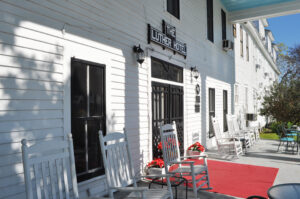 Five years later in 1941, the work was complete with structural strengthening, new wiring and plumbing and the installation of private bathrooms for each guest room. The breezeways between the central building and the east and west wings were enclosed, and a handful of rooms were turned into apartments for families of soldiers at Camp Hulen.
Five years later in 1941, the work was complete with structural strengthening, new wiring and plumbing and the installation of private bathrooms for each guest room. The breezeways between the central building and the east and west wings were enclosed, and a handful of rooms were turned into apartments for families of soldiers at Camp Hulen.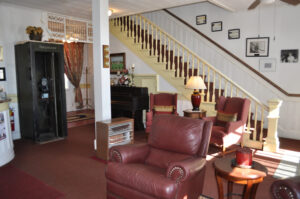
The historic hotel reopened to the public on April 20, 1941 (the owners’ 20th wedding anniversary) as The Luther Hotel. Since then it has survived many hurricanes, including Carla in 1961, as well as a severe fire in 1944.
The “stars were bright” at the Luther, too! Numerous celebrities stayed at The Luther while in the area doing shows at Camp Hulen, making movies or on press trips, including Shirley Temple, Rita Hayworth, Carole Landis, Artie Shaw, Harry James, Lyndon Baines Johnson (a family friend of Elsie Callaway Luther), actor John Schneider, and others.
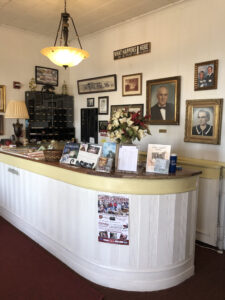 The sign at the front desk stated, “He who enters here is a stranger but once” and there were many who agreed. Throughout the 1970s and 80s the hotel often operated at full capacity, especially during the winter months when it became home for several Canadians and a Minnesota family who called it their winter home for twenty years.
The sign at the front desk stated, “He who enters here is a stranger but once” and there were many who agreed. Throughout the 1970s and 80s the hotel often operated at full capacity, especially during the winter months when it became home for several Canadians and a Minnesota family who called it their winter home for twenty years.
The Luther received its designation as a Recorded Texas Historic Landmark in 1965, over half a century ago. The United States Department of the Interior placed The Luther Hotel on the National Register of Historic Places in 2010.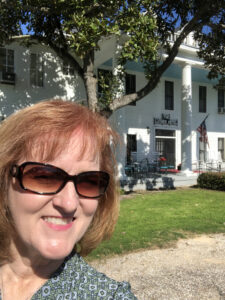
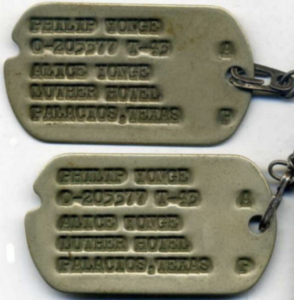 I visited the Luther on my birthday (January 12) in 2019, just months before the motor court wing that was built from the cypress of the original hotel porch was torn down, due to neglect. The manager was kind enough to show me a room filled with memorabilia from the hotels history. Autographed photos from celebrities, dog tags of soldiers from Camp Helen who used to live there, and even a letter from LBJ. I could have spent months combing through everything, and had hoped at one point to be able to return to do just that.
I visited the Luther on my birthday (January 12) in 2019, just months before the motor court wing that was built from the cypress of the original hotel porch was torn down, due to neglect. The manager was kind enough to show me a room filled with memorabilia from the hotels history. Autographed photos from celebrities, dog tags of soldiers from Camp Helen who used to live there, and even a letter from LBJ. I could have spent months combing through everything, and had hoped at one point to be able to return to do just that.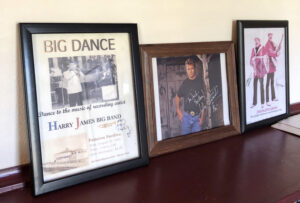
The hotel remained in the Luther family until the passing of Jack Findlay, the last family caretaker, in 2020. Surviving family members sold the hotel to the Ed Rachal Foundation from Corpus Christi, and the agreement states that the property must be demolished. The foundation is not interested in restoration.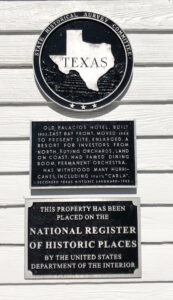
The Luther Hotel, which would have celebrated its 120th Anniversary this year will most likely not survive to celebrate that landmark.
If you are interested in expressing your views or concern over losing this piece of Texas history, you’re encouraged to contact:
Board of Directors, Ed Rachal Foundation, 555 N. Carancahua Street #700, Corpus Christi, Texas 78401
Or sign the online petition to save/repurpose the hotel at: https://www.change.org/p/save-the-luther-hotel-in-palacios-texas?source_location=topic_page
Let’s hope that we, as Texans, don’t continue to dismiss the importance of valuing and saving our history for future generations.
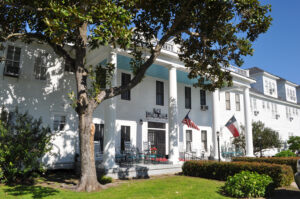
Historic Texas Courthouse Ghost Linked to Murders
I was considering what my first October post should be this year . . . a ghost story, a fascinating “story behind the stones” of old cemeteries, a thrilling story from Texas history, or a historic site. Why not all of the above? If you travel to Coryell County, it’s all in one place.
Workers at the Coryell County Courthouse in Gatesville have felt an ‘other-worldly’ presence for years: cold breezes through the county clerk’s office, an occasional firm tap on the shoulder and even furniture being re-arranged in the middle of the night. Locals have dubbed the courtly ghost ‘Elroy’ because they aren’t certain who it actually is. But there are theories that the spirit can’t leave the courthouse because of a connection to a sensational 1909 murder right in the courtroom.
It happened over 100 years ago.
In 1908 a 19-year-old young woman named Verna Mabel Ware was assaulted by a 20-year-old-man named John J. Hanes in the Gatesville area. It was alleged that Hanes – reportedly studying pharmacy – drugged chocolates he gave to the girl at a spring picnic and then took advantage of her, resulting in the birth of a child.
He was charged with seduction, as the word ‘rape’ wasn’t used at the time because it was thought to be too harsh.
Hanes reportedly had several male friends lie on the witness stand during his trail.
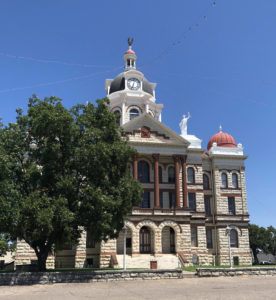 It’s apparent that the behavior wasn’t unusual at the time, because before his own trial proceedings were finished he sat in the courtroom on February 2, 1909 watching another man named Wiley Mulhouse who was being prosecuted on the same charge. Because the jail was in the basement then, Hanes would have been returning to his cell at the end of the day. The two trials had split the town into separate contentious sides.
It’s apparent that the behavior wasn’t unusual at the time, because before his own trial proceedings were finished he sat in the courtroom on February 2, 1909 watching another man named Wiley Mulhouse who was being prosecuted on the same charge. Because the jail was in the basement then, Hanes would have been returning to his cell at the end of the day. The two trials had split the town into separate contentious sides.
Both Ware and Hanes came from respected farming families in the area and had many friends.
Verna, distraught with her situation, stood in the rotunda with her brother Ezra looking through the plate glass window that separated them from the courtroom. Fearing she would never see justice, she decided to take action herself.
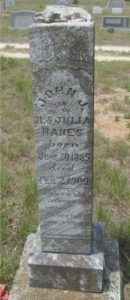 She pulled a 38 caliber revolver from her purse and shot through the glass, hitting Hanes three times in the back. He died instantly. As people in the courtroom scattered, Ware continued to fire hitting James J. Smith (age 68) in the head, Dave Ross (age 48) in the arm and back and A. P. Wiley, Jr. in the leg. Only Wiley would survive his wounds.
She pulled a 38 caliber revolver from her purse and shot through the glass, hitting Hanes three times in the back. He died instantly. As people in the courtroom scattered, Ware continued to fire hitting James J. Smith (age 68) in the head, Dave Ross (age 48) in the arm and back and A. P. Wiley, Jr. in the leg. Only Wiley would survive his wounds.
Initial newspaper accounts reported that the three other wounded men were merely spectators in the courtroom, but local lore hints that they may have been character witnesses for Hanes.
Judge Arnold maintained composure during the incident and directed officials to take Ware downstairs to the jail. Physicians who visited her in her cell declared that she was in a “critical condition of nervous collapse.”
After a few days in jail formal charges were made of three counts of murder and one for carrying a pistol. Her bond was set at $7,500, and was paid by citizens of the community who sympathized with Ware and her situation.
The trail began late in 1909 and continued until February when she was declared not guilty due to temporary insanity. Reporters wrote that at times during the proceedings the jury and spectators were moved to tears. She did have to pay a fine for having the gun, however.
 So who is the courthouse ghost? Perhaps it is Hanes who was positive he would get away with his transgression, and now is trapped in the courthouse. Perhaps it’s the spirit of someone else. We may not ever know for sure.
So who is the courthouse ghost? Perhaps it is Hanes who was positive he would get away with his transgression, and now is trapped in the courthouse. Perhaps it’s the spirit of someone else. We may not ever know for sure.
But if you visit the Coryell courthouse, be prepared to feel an unseasonable chill in the air.
Now, I’m curious…are you more likely to visit the courthouse because of it’s beauty, or because of its ghost?
Incidentally….
-
The jury for the Mulhouse case returned a few days later and returned a guilty verdict with a sentence of two years.
-
The three shooting victims are buried in area cemeteries, with nothing on their markers to denote their newsworthy demises.
-
In the 1990s a local artist even depicted the courthouse in an oil painting with a shadowy figure peering out of a second floor window over Main Street.
-
The year after her trial, Verna Ware married W.R. Eck who adopted her daughter Opal. He unfortunately passed away in 1918.
-
Ware remarried, but it didn’t last. She and Opal moved to Utah were Verna passed away in a rest home in 1973.
-
And the courthouse? It’s well worth visiting with or without the ghost in attendance. The Beaux Arts beauty was built in 1897-1898 of red and white sandstone from a design of architect Wesley Clark Dodson.
Beaumont’s Giant Hydrant – The Stuff of Doggie Dreams
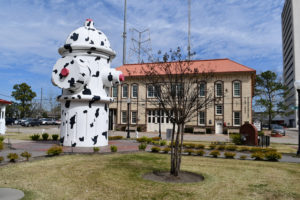
If you travel with your dog, this might be their favorite Texas roadside attraction – a 24-foot, Dalmation-spotted fire hydrant in Beaumont. Sure to make tails wag in anticipation!
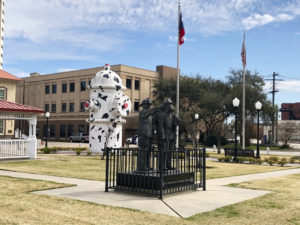 Designed as the World’s Largest Fire Hydrant, the giant fiberglass structure reinforced with 1,000 feet of steel was created at Disneyland by the Walt Disney Company to promotion the 1999 re-release of the animated classic “101 Dalmations.” It weighs an incredible 4,500 pounds and can blast 1,500 gallons of water a minute. Yep – it’s actually a working fire hydrant.
Designed as the World’s Largest Fire Hydrant, the giant fiberglass structure reinforced with 1,000 feet of steel was created at Disneyland by the Walt Disney Company to promotion the 1999 re-release of the animated classic “101 Dalmations.” It weighs an incredible 4,500 pounds and can blast 1,500 gallons of water a minute. Yep – it’s actually a working fire hydrant.
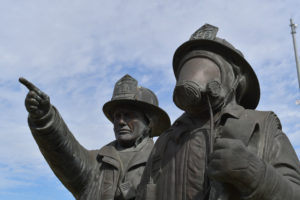 The adorable painted black and white Dalmation pattern is actually copyrighted by Walt Disney. Spots can be serious business!
The adorable painted black and white Dalmation pattern is actually copyrighted by Walt Disney. Spots can be serious business!
But how in the heck did this thing of doggy-dreams end up in Texas? Partially due to the fact that it was provided with a place of honor right outside of the Official Fire Museum of Texas, Beaumont was chosen from 300 U.S. cities to be its permanent home.
Since its installation, another giant hydrant in South Carolina has surpassed its height record by 40 feet. But while that one may now hold the “tallest” designation, Beaumont’s own Disney-esque version is still the World’s Largest Working Fire Hydrant.
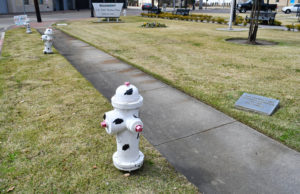 And so it sits, just outside of downtown Beaumont, as a beacon for all Disney fans, dogs and dog lovers. It shares a small park across the street from the Fire Museum with the Firemen’s Memorial and a few small “mini me” spotted hydrants.
And so it sits, just outside of downtown Beaumont, as a beacon for all Disney fans, dogs and dog lovers. It shares a small park across the street from the Fire Museum with the Firemen’s Memorial and a few small “mini me” spotted hydrants.
Visit this unusual attraction for yourself at 219 Main Street in Beaumont. And while you’re there be sure to check out the fascinating collection and displays at the Fire Museum.
22 Things to Do on a Rainy Day in Galveston
The best laid plans . . . just might have to be “adjusted” due to unexpected weather. If you’re in Galveston on vacation and the clouds try to rain on your parade – don’t worry. There are plenty of ways to entertain yourself, your friends and family inside. Here are a few ideas to consider.
As always, be sure to call ahead to confirm location hours and if they are open as the weather may be a factor to their site as well.
Paid parking on the island is handled through the “paybyphone” app, and you’ll simplify your visit by setting it up ahead of time. Download the app, set it up with your license plate and credit card number and you’re good to go!
GALVESTON RAILROAD MUSEUM
2602 Santa Fe Place, 409-765-5700
https://galvestonrrmuseum.org
Open Daily from 10 a.m. to 5 p.m.
Admission
Free parking in the rear lot; app-paid street parking and paid lot parking alongside building.
Interesting museum about the history of rail travel. Covered walkways between railcars outside. Explore open rail cars from different eras, including the historic Bonnie Brook Rail Car once owned by comedian/actor Jackie Gleason.
OCEAN STAR OFFSHORE DRILLING RIG & MUSEUM
20th Street & Harborside, 409-766-7827
https://www.oceanstaroec.com/museum/
Open Daily (except Thanksgiving, Christmas Eve & Christmas Day) from 10 a.m. to 5 p.m.
Admission
Paid parking lots, or app-paid street parking along the Strand
The Ocean Star is retired jack-up drilling rig that operated in the Gulf of Mexico from 1969 to 1984 and drilled over 200 wells during that timeframe. In 1995, the OEC purchased the Ocean Star, and after lengthy refurbishment, opened it as a museum in 1997.
The museum is designed to be a self-guided facility with videos, information, interactive exhibits throughout, and takes most visitors about 1.5 hours to tour completely.
BRYAN MUSEUM
1315 21st Street, 409-632-7685
https://thebryanmuseum.org
Closed Monday & Tuesday. Other days open 10 a.m. to 5 p.m. (Thursdays until 7 p.m.)
Admission
Free onsite parking for visitors off Avenue M, and street parking surrounding museum.
The Bryan Collection is the home of one of the world’s largest collections of historical artifacts, documents, and artwork relating to Texas and the American West.
1892 BISHOP’S PALACE
1402 Broadway, 409-762-2475
https://www.galvestonhistory.org/sites/1892-bishops-palace
Self-guided tours daily from 10 a.m. to 5 p.m. (last ticket sold at 4 p.m.)
Admission
Free street parking available
Formerly the home of the Gresham family and later owned by the Catholic diocese, it’s one of the most significant Victorian residences in the country.
MOODY MANSION / CHILDREN’S MUSEUM
2618 Broadway, 409-762-7668
https://www.moodymansion.org
Open daily from 10 a.m. to 5 p.m. (last tickets sold at 4 p.m.)
Admission
One of the attractions I most often recommend on the island, this beautiful mansion is fully furnished and gives a clear impression of what life for the wealthy was like in Galveston’s Gilded Age.
Be sure to check out the antique car collection on site.
CLAY CUP STUDIOS
2219 Postoffice Street, 409-762-CLAY
https://www.claycupstudios.com/walkin
Check website for days and hours, as they vary.
In addition to walk-in-and-choose projects at this paint-your-own pottery studio, be sure to check their schedule for special classes.
LA KING’S CONFECTIONERY
2323 Strand, 409-762-6100
https://lakingsconfectionery.com
Sunday through Thursday, 11:00 a.m. to 7:30 p.m.; Friday 11:00 a.m. to 8:00 p.m.; Saturday 11:00 to 9:00 p.m.
Old-fashioned candy counter and ice cream parlor. They’re famous for their salt water taffy. Check their website and Facebook page for time of their free taffy pulling demonstrations, using a machine over 100 years old. See something interesting in the candy case? Ask for a free sample. Ice cream is made from Galveston’s original Purity ice cream recipe.
GALVESTON COUNTY MUSEUM
722 21st Street in the courthouse, 409-766-2340
https://galvestoncomuseum.wixsite.com/museum/
Open Monday, Wednesday and Friday from 10 a.m. to 4 p.m.
Free admission.
A small but fascinating collection with artifacts from Galveston’s past.
ROSENBERG LIBRARY MUSEUM
1900 Storm Exhibit
2310 Sealy Avenue
Monday, Friday-Saturday, 9 a.m.-6 p.m.; Tuesday-Thursday, 9 a.m.-8 p.m.; Sunday closed.Parking is free behind the library and across the street on Sealy Avenue.
A curated gathering of photographs of the aftermath of the 1900 Storm, as well as audio recordings of interviews with storm survivors.
ESCAPE THE ISLAND (Escape Room)
910 21st Street, 409-443-5092
https://escapetheisland.com
Visit their website to book a time. Five different themed escape rooms to choose from will keep your family or group entertained for an hour or so of interactive fun.
SCHLITTERBAHN WATER PARK (indoor section)
2109 Gene Lucas Blvd. (next to Moody Gardens), 409-770-9283
https://www.schlitterbahn.com/galveston/schedule
Admission
Check website for dates and hours
Indoor portion of park is great even on rainy days. Free parking.
MOODY GARDENS RAINFOREST / AQUARIUM / 3D MOVIE THEATER
One Hope Blvd., 409-744-4673
https://www.moodygardens.com/
Admission
Free Parking
Check website for hours and special events, which change seasonally. Fascinating for all ages, their year-round attractions are usually open daily from 10 a.m. to 6 p.m.
GALVESTON BOOKSHOP
317 23rd Street, 409-750-8200
http://galvestonbookshop.com
Monday through Saturday, 10 a.m. to 6 p.m., and Sunday 10 a.m. to 4 p.m.
Street parking available (pay on parking app, see information above)
Wandering through a fully-stocked bookshop is one of my favorite rainy day activities, and this one has selections for everyone in the family. Special section of titles about Galveston, too (including all four of my books). Many local authors like me make sure their books at the GB are personally signed, so they make nice souvenirs and gifts as well.
GRAND GALVEZ HOTEL GHOST TOUR (all indoor tour)
2024 Seawall, Call ahead to make reservations. 409-765-7721, option 1
Thursdays at 5 p.m. and Fridays at 4 p.m.
Fee.
Led by long time Galvez concierge Melissa Hall, who has gathered stories from staff and guests for years. 90-minute family friendly tour.
GRAND 1894 OPERA HOUSE
2020 Postoffice Street, 409-765-1894
http://www.thegrand.com
Self-guided and guided tours of an exquisite theater from the turn of the last century. Call for details.
TOUJOUSE BAR at TREMONT HOUSE
2300 Ships Mechanic Row,409-763-0300
https://www.thetremonthouse.com
Paid valet parking available. Paid (via app – details above) street parking, free after 6 p.m.
Sit at a beautifully carved mahogany bar whose history reaches back over a century, and enjoy hand-crafted cocktails. Occasional live music. Call for further details.
PIRATES, LEGENDS OF THE GULF COAST/HAUNTED MAYFIELD MANOR
2313 Harborside Drive, 409-762-6677
https://www.hauntedmayfieldmanor.com
Year-round haunted house with live actors, and a pirate museum (separate attractions.) Admission.
GALVESTON ARTS CENTER
2127 Strand, 409-763-2403
https://www.galvestonartscenter.org
Wednesday through Sunday, Noon to 5 p.m. (Closed on federal holidays)
Free admission
Exhibits a diverse array of artwork in all mediums. Family friendly. Check their website and Facebook page for occasional workshops.
GRAND GALVEZ DAY SPA
2024 Seawall, 409-515-2154
https://www.hotelgalvez.com/galveston-spa
Treat yourself to a little (or a lot of) pampering at Galveston’s “Queen of the Gulf.”
ANTIQUING! Days and hours of antique shops on the island vary widely. Please call each shop or visit their website for specifics.
Antique Warehouse
423 25th Street, 409-762-8620
https://www.facebook.com/AntiqueWarehouseGalveston/
Somewhere in Time
124 20 (at Strand), 409-6844
https://somewhereintimeantiques.com
Big House Antiques
2212 Mechanic, 409-762-0559
https://www.facebook.com/Big-House-Antiques-168427386500765/
St. John Antiques
2001 Postoffice, 409-443-5366
http://www.stjohnantiques.com
Antiques Pavilion
2222 Postoffice, 409-443-5500
https://antiquepaviliongalveston.com
TROLLEY RIDES
https://www.galvestontrolley.com
$1 for adults, accompanied minors free
You can still see some of the sights around the Island – rain or not – on a fun ride along a Seawall Loop, Downtown Loop or Historic Rail Trolley.
Check website for route, times and days, which vary by season.
And of course … if it’s a stormy night on the island, it’s a great time to curl up with my book “Ghosts of Galveston” for some tales of those who’ve never quite left the shores. The version I wrote for middle school readers, “Ghostly Tales of Galveston” is a good choice for families. (Available at the Galveston Bookshop, Tina’s on the Strand, The Admiralty and amazon.com)
When the weather clears, I hope you’ll join me for one of my walking tours. Information on those HERE.
Irish Castle or Texas Courthouse? It’s Both!
Ahhhh, romantic Irish castles. Something that makes this Irish lady’s heart swoon. But wait…this is no castle at all. It’s actually the Shelby County Courthouse in far east Texas!
Architect John Joseph Emmett Gibson, a native of Ireland who was hired to design the building in Center Texas in 1883, wanted to give his masterpiece the appearance of the castles of his homeland complete with turrets, towers and even secret passageways.
Gibson not only designed and oversaw the construction of the two-story Romanesque Revival courthouse, he had over two million bricks specially made for the project. The mortar was made from sand carried from forty miles away in Louisiana by oxcarts. The glass, vents, and diamond-shaped braces also made the journey from New Orleans and other Southern ports before being transported by oxen.
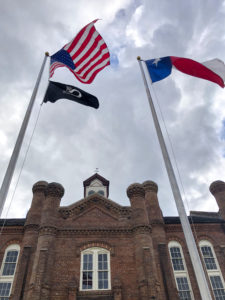 It was a grand undertaking that took two years to complete, but has provided a jewel of a centerpiece to the town square for generations.
It was a grand undertaking that took two years to complete, but has provided a jewel of a centerpiece to the town square for generations.
A total of twelve fireplace chimneys surround the top of the beautiful structure like a crown. Accented with arched entryways, tall slender windows and diminutive buttresses, it’s topped by a frame cupola.
The courthouse has an entry in the middle of each side, but the primary entrance is on the north facade.
The second floor courtroom is a large and lofty space, with exposed wooden trusses supporting the roof that more give the appearance of being inside a cathedral than a courthouse. The curved alcove behind the judge’s bench helped to amplify his voice in the days before sound systems were even a dream.
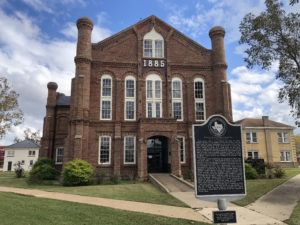 The wooden jury chairs aren’t original, having been obtained from another historic Texas courthouse in Nacogdoches. But the benches used by visitors are not only original, they display a decidedly European detail for those who take the time to look closely: metalwork feet depicting dragons’ feet, wind in back of the benches into the beasts’ bodies, wings and ending in heads peering over the top where they are swallowing their own tails. Probably not something most of the local cowboys and farmers had seen before!
The wooden jury chairs aren’t original, having been obtained from another historic Texas courthouse in Nacogdoches. But the benches used by visitors are not only original, they display a decidedly European detail for those who take the time to look closely: metalwork feet depicting dragons’ feet, wind in back of the benches into the beasts’ bodies, wings and ending in heads peering over the top where they are swallowing their own tails. Probably not something most of the local cowboys and farmers had seen before!
Gibson took Texas’ extreme weather into consideration in his design, utilizing high-arched windows that would open allow breezes to circulate air beneath the vaulted ceiling. It provided some relief from the summer heat, but also caused a bit of a problem with birds flying indoors. One funny story tells of the time that an errant bird circling inside the courtroom was such a distraction that the judge asked if someone could do something about it. One loud, reverberating gunshot later the distraction was gone.
Every good castle should have at least one secret passageway, and the Shelby County Courthouse is no exception. On the floor to the left of the judge’s chair is an escape hatch (yes, really). If the verdict handed down upset the crowd, the judge could open the hatch climb down the stairs and escape through a one-way door. His deputies were in charge of keeping an eye on the crowd until he mounted his horse and got away, before releasing them for the day.
If that were scripted into a Western, it’d be downright comical.
The boards in the center of the courthouse come together at a point said to be the center of the county. When the building was renovated, the local Daughters of the Republic of Texas purchased an 1885 silver dollar coin to have imbedded at that spot.
An interesting side note: In 1948, a young Texas congressman began his successful U. S. Senate campaign in front of the Shelby County Courthouse.
The courthouse, now listed on the National Historic Register, cost $26,000 to build, and over $1 million to renovate in the 1980s. But J.J.E. Gibson was never paid for his work. Whether that was an unfortunate oversight or the county just couldn’t afford it remains a bit of a mystery. The sister to the Shelby County Courthouse, it’s identical 1885 twin in Carthage, Panola County, was unfortunately torn down in 1957.
It probably shouldn’t come as any surprise that Texas has more historic courthouses than any other state, but did you know that of the 254 counties in the state – 242 of these treasured pieces of architecture are still in active government use? They can be a terrific focus for making a road trip checklist – helping you choose large and small towns to visit. Do you have a favorite?
Pearland’s Own Hindu Temple
When filling out your travel plans for the new year, remember to save time to explore the areas right around you. Some people call them “staycations” or being a “hometown tourist.” The thing is that we often don’t make time to see some of the most interesting sites near our homes – those that might even top the “to see” list of a visitor – because we think we’ll get around to it sometime.
Guess what? “Some time” can be now!
One of the features of Texas that makes it fascinating to explore is that it’s home to a diversity of cultures as big as the state. Yesterday I took the time to revisit the stunning Sri Meenakshi Temple in Pearland. Luckily for me, it was still bearing many of the colorful decorations of the celebration of the new year.
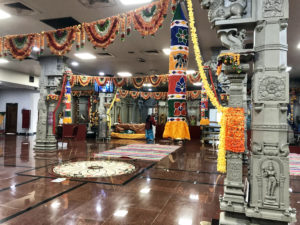
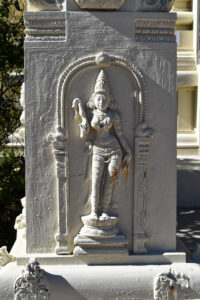 This is the only temple outside of India dedicated to Meenakshi, who is the Hindu Goddess of Marriage. It’s an exact replica of a temple in Madurai, India, with four smaller corner temples surrounding the main temple.
This is the only temple outside of India dedicated to Meenakshi, who is the Hindu Goddess of Marriage. It’s an exact replica of a temple in Madurai, India, with four smaller corner temples surrounding the main temple.
 The concrete structures were produced locally, but all of the granite stonework was carved and imported from India. They are currently having additional pillars carved there to add to the complex.
The concrete structures were produced locally, but all of the granite stonework was carved and imported from India. They are currently having additional pillars carved there to add to the complex.
When visiting, please keep in mind that this is a place of worship. Though they welcome visitors throughout the year, they request that appropriate clothing should be worn as a sign of respect, covering shoulders and knees. Shoes must be removed before going into the temple, but socks are allowed. Wooden shelves at the side entrances can also be used for their temporary storage, or you may leave your shoes on the ground outside of the temple and retrieve them as you leave.
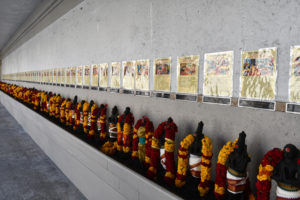 As you enter the large temple through the main doors, move around the interior in a clockwise motion. This signifies keeping “the god” on “the right.” Inside are four shrines dedicated to Shiva, Meenakshi, Vishnu and Lakshmi. In Hinduism there is a “pantheon of gods,” symbolizing many concepts and Hindus pray to them as their favorite or personal dieties.
As you enter the large temple through the main doors, move around the interior in a clockwise motion. This signifies keeping “the god” on “the right.” Inside are four shrines dedicated to Shiva, Meenakshi, Vishnu and Lakshmi. In Hinduism there is a “pantheon of gods,” symbolizing many concepts and Hindus pray to them as their favorite or personal dieties.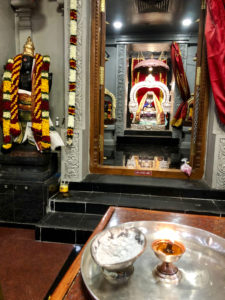
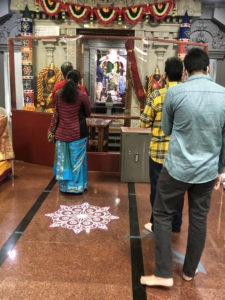 Photography is permitted, but as with any place of worship, please try not to be intrusive of those who are there to pray.
Photography is permitted, but as with any place of worship, please try not to be intrusive of those who are there to pray.
 After visiting the temples and taking in the remarkable architecture, follow one of the sidewalks behind the temple complex to the Peacock Sanctuary. The Indian Peafowl is the national bird of India, and the beautiful specimens that live here wander around an enclosure that can be viewed from benches surrounding it. My grandmother used to have peacocks and (although they can be obnoxiously loud early in the morning!) they always hold a place in my heart.
After visiting the temples and taking in the remarkable architecture, follow one of the sidewalks behind the temple complex to the Peacock Sanctuary. The Indian Peafowl is the national bird of India, and the beautiful specimens that live here wander around an enclosure that can be viewed from benches surrounding it. My grandmother used to have peacocks and (although they can be obnoxiously loud early in the morning!) they always hold a place in my heart.
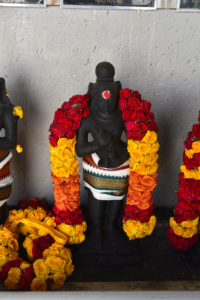 A Visitors Center is open from 8 a.m. to 8 p.m. on weekends, and if you are interested in learning more about the culture this is the time to visit. There is also an on site cafeteria that’s open to the public on weekends and serves authentic vegetarian fare. Visitors can purchase tokens and use them to pay for their meals.
A Visitors Center is open from 8 a.m. to 8 p.m. on weekends, and if you are interested in learning more about the culture this is the time to visit. There is also an on site cafeteria that’s open to the public on weekends and serves authentic vegetarian fare. Visitors can purchase tokens and use them to pay for their meals.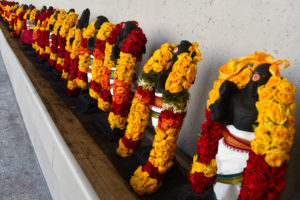
Several years ago, I took my young Girl Scout troop, and one of the temple priests invited them to sit on a rug with him while he explained some of the things they were seeing and hearing. What a wonderful experience!
Remember that although it may feel a bit awkward to step into an unfamiliar setting, as long as you are respectful of the people and culture the space serves, they openly welcome visitors.
Check the Temple’s Facebook page for the latest updates on visiting days and hours.
What are some of the places in your hometown that you’ve never taken the time to see for yourself?
Houston’s New 713 Music Hall
Last night I attended a client preview event for the newest music venue in Houston, 713 Music Hall. And now my husband and I can’t wait to go back to attend concerts there!
When I worked in Downtown Houston, I saw the big Barbara Jordan Post Office location there every day. “Big” is an understatement – it was massive! When the post office closed, the question about what to do with the building was just as large as its footprint. Enter some design geniuses who are turning it into a multi-purpose space with its own food court, farmer’s market on weekends, rooftop green space and future retail space. And part of it has been developed into the 713 Music Hall . . . just look at this prime location.
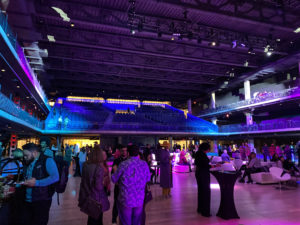 We had a great time wandering all three levels of 713. The venue has eclectic lobbies, seating areas and multiple bars with colored lighting effects on each level make exploring the venue half the fun. With 90,000 square feet of space, there was plenty to discover.
We had a great time wandering all three levels of 713. The venue has eclectic lobbies, seating areas and multiple bars with colored lighting effects on each level make exploring the venue half the fun. With 90,000 square feet of space, there was plenty to discover.
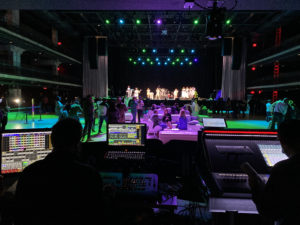
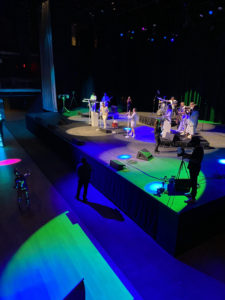 And even though the space is, well . . . BIG . . . it still succeeds in feeling intimate with clear views of the stage throughout the levels and pitch-perfect audio. When the band Danny Ray and the Acoustic Production performed, we took the opportunity to scope out each level to choose our “target seats” for future concerts there, and made a pleasant discovery: there’s not a bad seat in the house!
And even though the space is, well . . . BIG . . . it still succeeds in feeling intimate with clear views of the stage throughout the levels and pitch-perfect audio. When the band Danny Ray and the Acoustic Production performed, we took the opportunity to scope out each level to choose our “target seats” for future concerts there, and made a pleasant discovery: there’s not a bad seat in the house!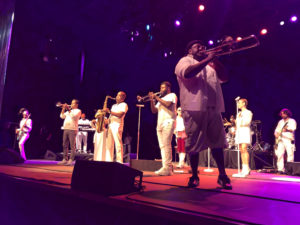
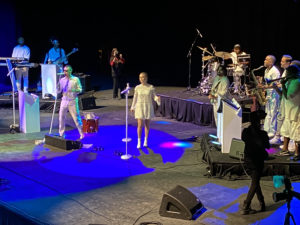
 In addition to fun performances by Acoustic Production and spectacular DJ, dancers in lighted costumes that would make any disco fan proud kept attendees entertained throughout the night.
In addition to fun performances by Acoustic Production and spectacular DJ, dancers in lighted costumes that would make any disco fan proud kept attendees entertained throughout the night.
While we watched and listened to the entertainers, we had the chance to sample tempting foods from local caterers. We had eaten Churrasco’s before, so weren’t surprised their offerings were tasty. But happy to discover LaRue Catering (some of the best macarons I’ve tasted), The Hometown Chef (who served mac’n’cheese in martini glasses and had a toppings bar including friend jalapeños, friend onions, bacon and more – what a great idea), and Cafe Natalie (where we loved everything they offered, including fresh spring rolls).
If you’re going to eat, you’re going to need some liquid refreshment to wash it down, and there were ample bars available.
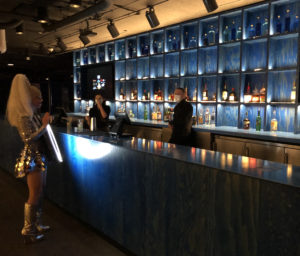
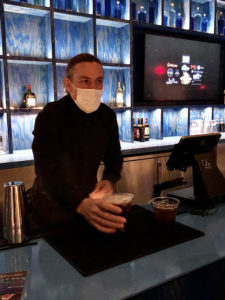
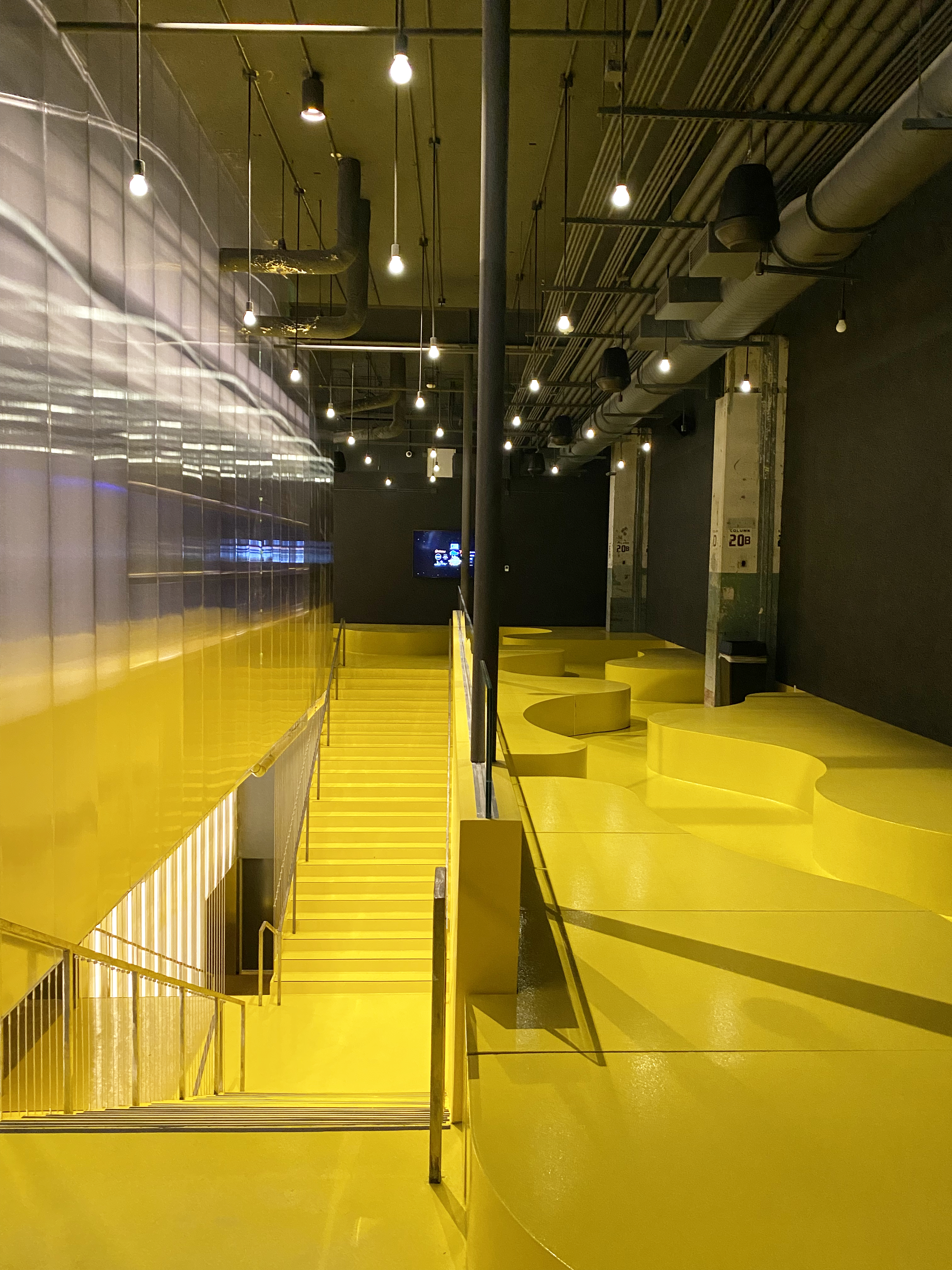
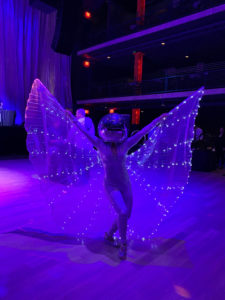
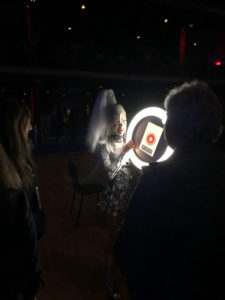
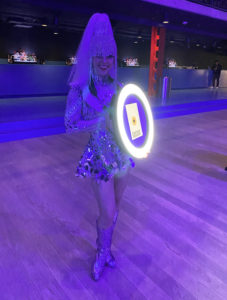
Have you ever seen such a cute “wandering photo booth?” No need to build a booth in your event space, or try to “coax” your friends to go across the room to wait in line. And the pics are texted directly to your cell phone. The guests were loving this.